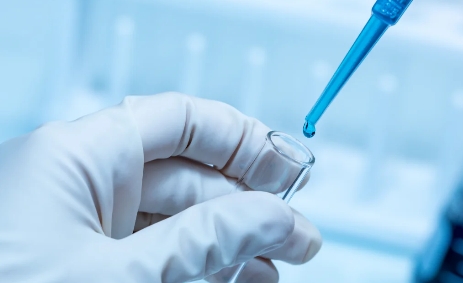Understanding the role of in vivo pharmacokinetics is critical in drug safety assessment. Pharmacokinetics studies how drugs move through the body, impacting absorption, distribution, metabolism, and excretion processes. These studies are crucial in predicting how a drug behaves in humans, identifying safe dosage ranges, and pinpointing potential side effects. Without thorough in vivo pharmacokinetic research, pharmaceutical companies risk releasing unsafe medications, which can lead to severe consequences for patient health and legal repercussions for the company.

Key Components of In Vivo Pharmacokinetics
Absorption
Absorption is the first critical step in pharmacokinetics where the drug enters the bloodstream. Factors influencing absorption include the drug’s formulation, the route of administration, and the patient’s physiological condition. Oral drugs, for instance, must dissolve in the gastrointestinal tract before entering circulation. This step determines the drug’s bioavailability, which in turn affects efficacy and safety. Understanding absorption helps pharmaceutical companies optimize drug formulation and administration methods, ensuring maximum safety and effectiveness for patients.
Distribution
Once absorbed, drugs are distributed throughout the body’s tissues. This distribution depends on blood flow, tissue affinity, and the drug’s ability to cross cell membranes. Certain tissues may accumulate drugs at higher concentrations, which can lead to toxicity if not monitored. Studying drug distribution allows for the prediction of therapeutic and toxic effects in different tissues, ensuring that drug levels remain within safe limits. Effective distribution analysis is thus integral to formulating dosage guidelines that maximize efficacy while minimizing adverse effects.
Metabolism
Metabolism transforms drugs into more water-soluble compounds for easier excretion. The liver, primarily responsible for drug metabolism, can affect the pharmacological activity of the drug. Drugs are metabolized by enzymes, with the cytochrome P450 enzyme family playing a significant role. Differences in metabolism rates among individuals can lead to variations in drug effectiveness and safety. By understanding these metabolic pathways, scientists can predict interactions with other medications and individualize treatment plans to avoid adverse effects.
Excretion
Excretion is the final step, where drugs and their metabolites are eliminated from the body. The kidneys are the primary organs responsible for excretion. However, drugs can also be excreted through bile, sweat, and even breath. Inefficient excretion can lead to drug accumulation, potentially causing toxicity. Therefore, studying excretion processes helps in determining the duration drugs remain in the system, guiding dosing intervals, and minimizing the risk of accumulation-related toxicity.
Methods for Conducting In Vivo Pharmacokinetic Studies
Preclinical Testing and In Vivo Data
Preclinical testing serves as the foundation for understanding a new drug’s in vivo pharmacokinetics. Animal models are frequently used during these initial stages to gather data on absorption, distribution, metabolism, and excretion. These models help predict how the drug might behave in humans. The data obtained is essential for advancing to clinical trials, providing early insights into potential safe dosage levels and identifying any obvious toxicities that could be fatal if gone unchecked.
Clinical Trials and Translating In Vivo Data
Clinical trials are the next step, wherein in vivo data from preclinical studies are tested in humans. These trials are meticulously designed to evaluate drug safety and efficacy across various stages. The trials are performed in phases, each with increasing participant numbers. Translating in vivo data from animals to humans involves adjusting for differences in metabolism and other pharmacokinetic factors. This information helps refine dosage recommendations, identify potential adverse effects, and ensure the drug’s overall safety profile.
How In Vivo Pharmacokinetics Improves Drug Safety Assessment
Safety Thresholds and Dosage Recommendations
In vivo pharmacokinetic studies are instrumental in determining safety thresholds for new drugs. These thresholds help define the maximum safe dosage and identify the therapeutic window—the range between an effective dose and a toxic dose. Establishing these parameters is crucial for producing dosage recommendations that protect patient health while providing therapeutic benefits. The result is a prescribing guideline that minimizes the risk of adverse effects and maximizes the drug’s effectiveness.
Addressing Potential Drug Interactions and Toxicity
Understanding pharmacokinetic interactions is vital for patient safety, especially when multiple drugs are involved. In vivo studies provide insights into how drugs interact within the body, particularly concerning metabolic pathways. By predicting potential interactions and their toxic effects, researchers can provide crucial information for managing or avoiding these interactions in clinical settings. This helps in tailoring individualized therapy plans to avoid adverse reactions and ensure optimal patient outcomes.
Future Trends in In Vivo Pharmacokinetics
The future of in vivo pharmacokinetics lies in leveraging advanced technologies and personalized medicine. Technological innovations like high-throughput screening and advanced imaging techniques enhance our understanding of drug behavior in the body. Furthermore, genetic profiling allows for a more personalized approach, tailoring drug therapies to an individual’s specific metabolic profile. These advancements promise to improve drug safety assessment by making it more precise and patient-specific, ultimately leading to safer and more effective treatments.

Conclusion
In vivo pharmacokinetics is indispensable for ensuring drug safety. By understanding the processes of absorption, distribution, metabolism, and excretion, researchers can make informed decisions about dosage and potential interactions. Rigorous preclinical and clinical testing further ensures that drugs meet safety standards before reaching the market. As technology and personalized medicine continue to evolve, the role of in vivo pharmacokinetics will become increasingly sophisticated, providing even greater protections for patients.
